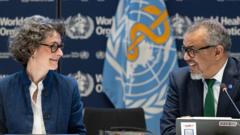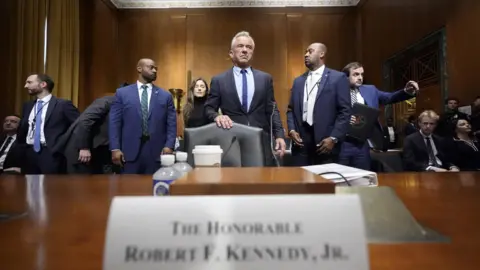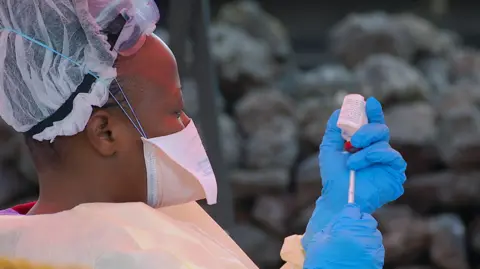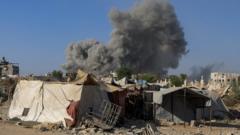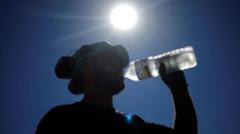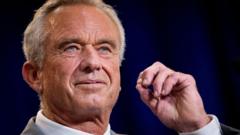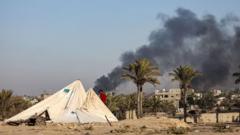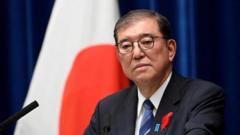In a landmark decision, members of the World Health Organization (WHO) have finalized a legally binding treaty designed to enhance global responses to future pandemics. This agreement seeks to prevent the disarray and resource competition observed during the COVID-19 health crisis.
Key components of the treaty include the commitment to rapidly share information regarding emerging diseases to allow scientists and pharmaceutical companies to expedite the development of treatments and vaccines. For the first time, WHO will also oversee global supply chains for essential personal protective equipment (PPE), including masks and medical gowns.
WHO Director-General Dr. Tedros Adhanom Ghebreyesus hailed the treaty as "a significant milestone in our shared journey towards a safer world." He emphasized that the agreement showcases the potential for collaboration among nations to tackle common challenges, indicating a strong commitment to multilateralism.
The treaty, reached after three years of negotiations, marks only the second instance in the organization's 75-year history in which a legally binding international agreement has been established, the first being a tobacco control pact in 2003. It is set to be formally adopted at the upcoming World Health Assembly next month.
However, the negotiations were conducted without participation from US representatives following former President Trump's decision to withdraw from the WHO, meaning the US will not be subject to the treaty when it officially exits in 2026.
Under the agreement terms, countries are mandated to ensure that pandemic-related medications are accessible globally during a future outbreak. The pact stipulates that participating manufacturers must allocate 10% of their vaccine, treatment, and diagnostic production to WHO, with another 10% offered at affordable prices.
Additionally, the treaty facilitates the transfer of health technologies to lower-income countries, provided there is mutual consent. This clause aims to empower local vaccine and medicine production, though it has sparked contention among developing nations that felt sidelined during the vaccine procurement process in the pandemic, as well as countries with robust pharmaceutical sectors concerned over potential impacts on research.
Central to the agreement is the proposed Pathogen Access and Benefit-Sharing System (PABS), which aims to expedite data exchange among pharmaceutical companies, enabling prompt drug development in future health crises.
Key components of the treaty include the commitment to rapidly share information regarding emerging diseases to allow scientists and pharmaceutical companies to expedite the development of treatments and vaccines. For the first time, WHO will also oversee global supply chains for essential personal protective equipment (PPE), including masks and medical gowns.
WHO Director-General Dr. Tedros Adhanom Ghebreyesus hailed the treaty as "a significant milestone in our shared journey towards a safer world." He emphasized that the agreement showcases the potential for collaboration among nations to tackle common challenges, indicating a strong commitment to multilateralism.
The treaty, reached after three years of negotiations, marks only the second instance in the organization's 75-year history in which a legally binding international agreement has been established, the first being a tobacco control pact in 2003. It is set to be formally adopted at the upcoming World Health Assembly next month.
However, the negotiations were conducted without participation from US representatives following former President Trump's decision to withdraw from the WHO, meaning the US will not be subject to the treaty when it officially exits in 2026.
Under the agreement terms, countries are mandated to ensure that pandemic-related medications are accessible globally during a future outbreak. The pact stipulates that participating manufacturers must allocate 10% of their vaccine, treatment, and diagnostic production to WHO, with another 10% offered at affordable prices.
Additionally, the treaty facilitates the transfer of health technologies to lower-income countries, provided there is mutual consent. This clause aims to empower local vaccine and medicine production, though it has sparked contention among developing nations that felt sidelined during the vaccine procurement process in the pandemic, as well as countries with robust pharmaceutical sectors concerned over potential impacts on research.
Central to the agreement is the proposed Pathogen Access and Benefit-Sharing System (PABS), which aims to expedite data exchange among pharmaceutical companies, enabling prompt drug development in future health crises.

